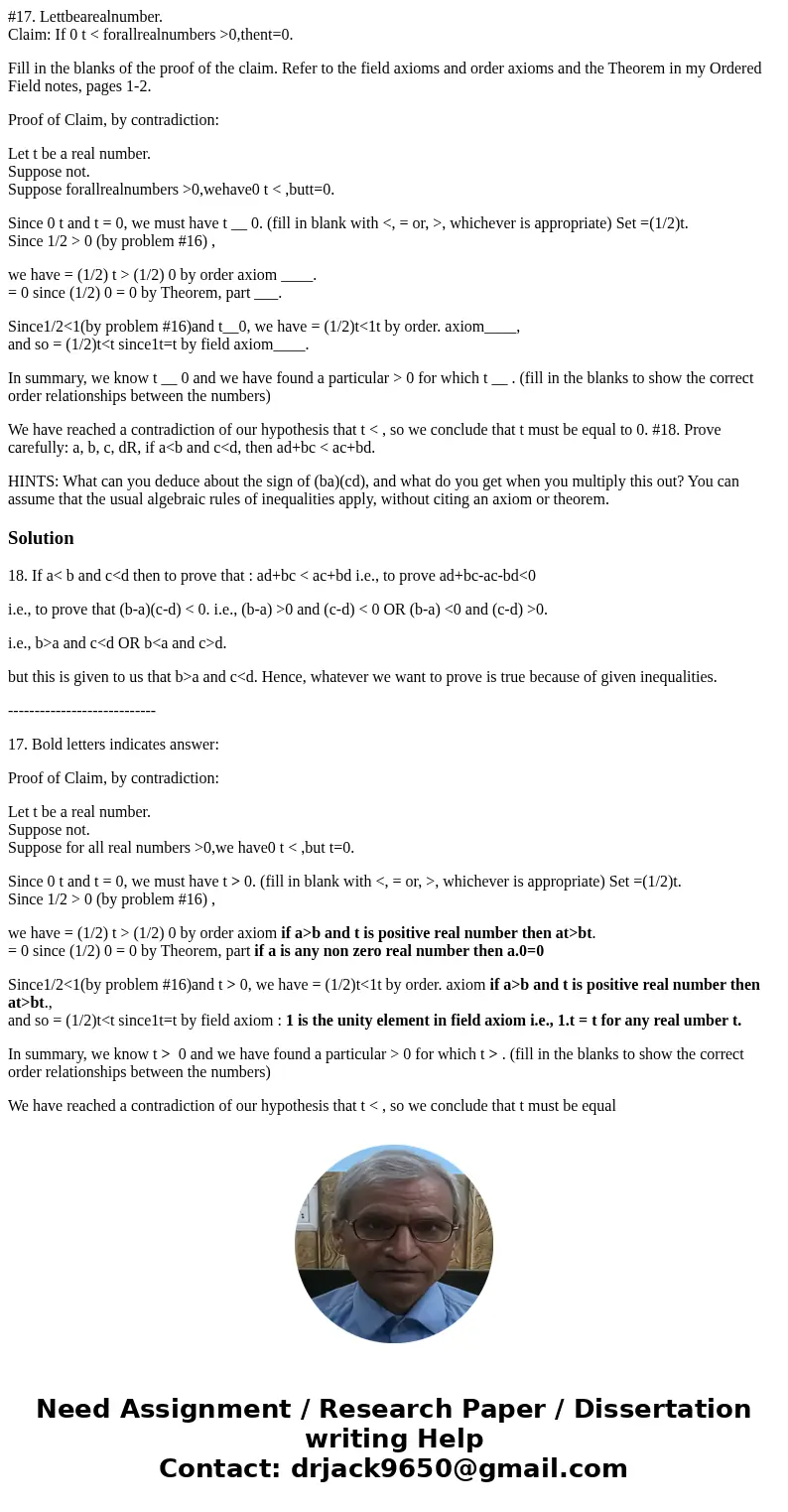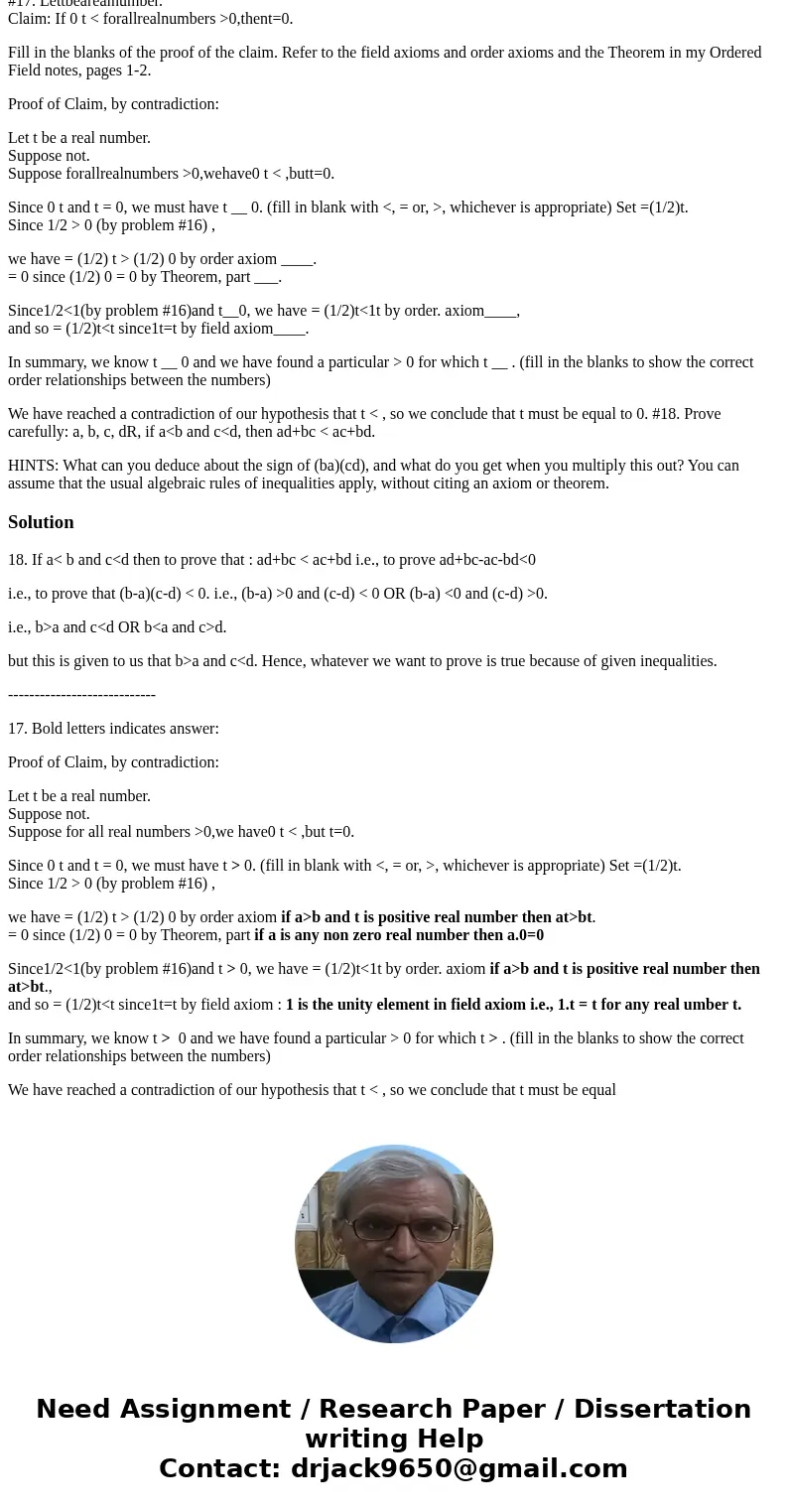17 Lettbearealnumber Claim If 0 t forallrealnumbers 0thent0
#17. Lettbearealnumber.
Claim: If 0 t < forallrealnumbers >0,thent=0.
Fill in the blanks of the proof of the claim. Refer to the field axioms and order axioms and the Theorem in my Ordered Field notes, pages 1-2.
Proof of Claim, by contradiction:
Let t be a real number.
Suppose not.
Suppose forallrealnumbers >0,wehave0 t < ,butt=0.
Since 0 t and t = 0, we must have t __ 0. (fill in blank with <, = or, >, whichever is appropriate) Set =(1/2)t.
Since 1/2 > 0 (by problem #16) ,
we have = (1/2) t > (1/2) 0 by order axiom ____.
= 0 since (1/2) 0 = 0 by Theorem, part ___.
Since1/2<1(by problem #16)and t__0, we have = (1/2)t<1t by order. axiom____,
and so = (1/2)t<t since1t=t by field axiom____.
In summary, we know t __ 0 and we have found a particular > 0 for which t __ . (fill in the blanks to show the correct order relationships between the numbers)
We have reached a contradiction of our hypothesis that t < , so we conclude that t must be equal to 0. #18. Prove carefully: a, b, c, dR, if a<b and c<d, then ad+bc < ac+bd.
HINTS: What can you deduce about the sign of (ba)(cd), and what do you get when you multiply this out? You can assume that the usual algebraic rules of inequalities apply, without citing an axiom or theorem.
Solution
18. If a< b and c<d then to prove that : ad+bc < ac+bd i.e., to prove ad+bc-ac-bd<0
i.e., to prove that (b-a)(c-d) < 0. i.e., (b-a) >0 and (c-d) < 0 OR (b-a) <0 and (c-d) >0.
i.e., b>a and c<d OR b<a and c>d.
but this is given to us that b>a and c<d. Hence, whatever we want to prove is true because of given inequalities.
----------------------------
17. Bold letters indicates answer:
Proof of Claim, by contradiction:
Let t be a real number.
Suppose not.
Suppose for all real numbers >0,we have0 t < ,but t=0.
Since 0 t and t = 0, we must have t > 0. (fill in blank with <, = or, >, whichever is appropriate) Set =(1/2)t.
Since 1/2 > 0 (by problem #16) ,
we have = (1/2) t > (1/2) 0 by order axiom if a>b and t is positive real number then at>bt.
= 0 since (1/2) 0 = 0 by Theorem, part if a is any non zero real number then a.0=0
Since1/2<1(by problem #16)and t > 0, we have = (1/2)t<1t by order. axiom if a>b and t is positive real number then at>bt.,
and so = (1/2)t<t since1t=t by field axiom : 1 is the unity element in field axiom i.e., 1.t = t for any real umber t.
In summary, we know t > 0 and we have found a particular > 0 for which t > . (fill in the blanks to show the correct order relationships between the numbers)
We have reached a contradiction of our hypothesis that t < , so we conclude that t must be equal


 Homework Sourse
Homework Sourse